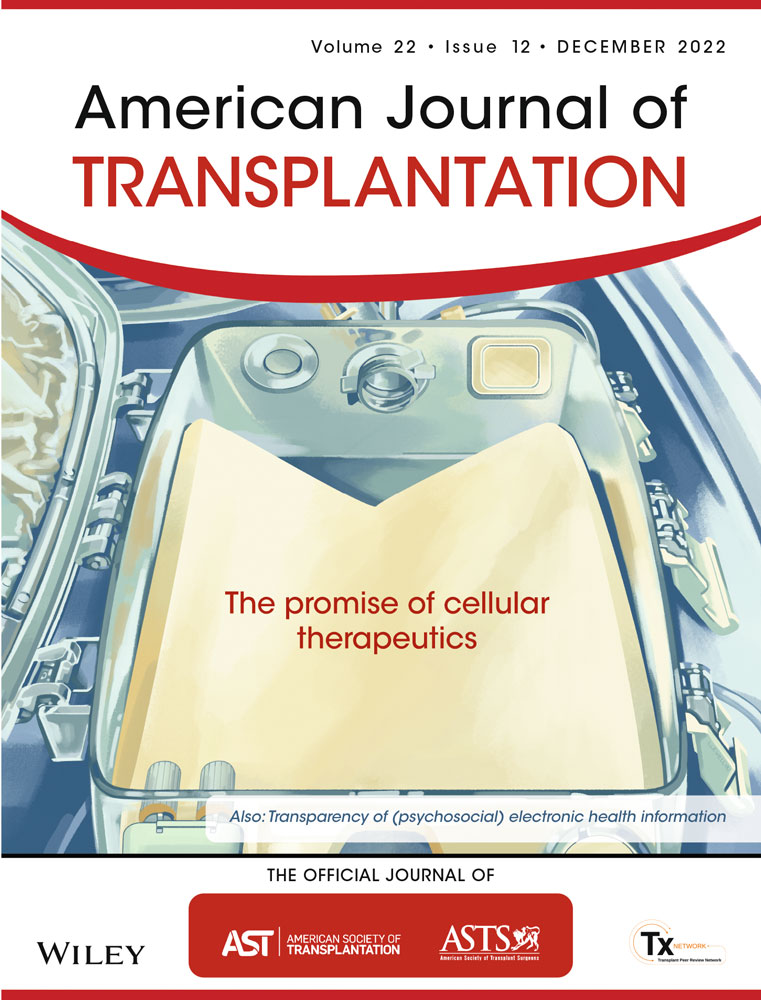Tracheal replacement: A never–ending search
Abstract
Successful application of cryopreserved aortic homografts for long segment tracheal replacement is a significant contribution to the field. See Martinod et al (page 2961).
Based on their more than 25-year experience in tissue regeneration with preclinical and first-in-human trials, Martinod and colleagues report the results of the prospective, single-institution study of airway replacement to reconstruct long-segment defects of the trachea and central bronchi by stented cryopreserved aortic matrices.1 The aim of the study could potentially lead to a consensus recommendation: Airway Replacement Using Stented Aortic Matrices as usual care. Silicone or nitinol stents are deployed to support the allografts and maintain airway patency. Based on the authors' experience, regeneration of epithelium and de novo generation of pseudocartilage from recipient cells were observed within aortic matrices, thus allowing stent removal in some patients at a postoperative mean of 18.2 months.4
Over 12 years, 35 patients with long-segment tracheal lesions or proximal lung tumors requiring a pneumonectomy were enrolled in the study and underwent airway reconstruction with cryopreserved aortic allografts (CAAs) following definitive resection. The experience includes patients with extended malignant or benign lesions of the trachea for whom conventional surgical resection with primary end-to-end anastomosis is technically impossible. Also included are patients with proximal lung tumors involving tracheal carina or main bronchi requiring a pneumonectomy. At the end of the operation, local muscle flaps were deployed to cover the aortic homograft and facilitate revascularization. The authors are to be congratulated for excellent results in this challenging group of patients. There have been no deaths directly related to the implanted bioprosthesis. One patient died as a result of a cerebrovascular accident. At a median follow-up of 29.5 months (range 1–133 months), n = 27 patients were alive (77.1%). At long-term follow-up, the majority of patients (n = 26) breathed and spoke normally through the stented aortic matrix. Eighteen patients (52.9%) had stent-related granulomas requiring bronchoscopic intervention. Ten of these 35 patients (28.6%) achieved stent free survival. A major advantage of this technique is the moderate antigenicity of the vascular tissue, which permits implantation of ABO-mismatched homografts and avoids immunosuppressive therapy.
Long-segment tracheal resection and replacement is a challenge and has led to a century-long search for a means of tracheal replacement. Foreign materials, including stents, combinations of tissue flaps and transfers as patches or tubes with or without scaffolding by autologous cartilage, tissue engineered trachea grafts have been attempted and mostly discredited.2, 3 Recently, a multi-segment allotransplantation has been successfully performed, ending with tracheostomy and immunosuppressive therapy.4 Immunosuppression makes this allo-transplantation approach less applicable to cancer patients. To date, airway replacement by CAA seems to be the most effective procedure, however, stent-related complications (migration, granulation tissue, re-stenosis, secretion management) and, above all, the lack of respiratory epithelium or stable cartilaginous wall regeneration may hamper long-term success.
Recently, one of us (E.A.R.) has published the first report of a successful total tracheal replacement in a post-COVID-19 patient by CAA5 followed by an additional five cases as of March 2022. Four patients are currently in excellent health, but stent dependent. One patient, after an uneventful postoperative course, developed a fatal trachea-innominate fistula 3 months after surgery. Standardized intraoperative approaches to airway management obviated the need for cardiopulmonary bypass or prophylactic tracheostomy. Differently from Martinod's technique, the CAA was completely wrapped by a pedicled omental flap transposed into the thorax. We believe the omental flap provides a more robust revascularization of the graft. The identification of mucociliary epithelium at biopsy performed between 6 and 9 months after the implant is promising.6 However, we have not identified cartilage originating from recipient bone marrow–derived mesenchymal stem cells.
It is not clear to us why patients with central lung lesions were included in this study.1 We do not consider central bronchial or carinal resections appropriate for aortic homograft reconstruction since standardized sleeve resection and bronchoplastic techniques are available to avoid pneumonectomy for centrally located lesions.
With the encouraging results described in this manuscript, can we conclude that tracheal replacement by stented CAA be considered as usual care? With appropriate patient selection and preoperative planning, the procedure is more straightforward than many other reported alternative approaches. Histology from follow-up endobronchial biopsies showed regeneration of respiratory epithelium and de novo generation of cartilage. It appears that one third of patients are doing well following stent removal.
We congratulate Professor Martinod and his colleagues for their dedicated bench to bedside approach to the problem of long-segment tracheal replacement by CAA. This is actually a promising possibility for patients who do not have other available treatment options. However, adoption of this option as usual care must await confirmation of epithelial and cartilage regeneration by multicenter retrospective studies and prospective clinical trials.
DISCLOSURE
The authors of this manuscript have no conflicts of interest to disclose as described by the American Journal of Transplantation.




